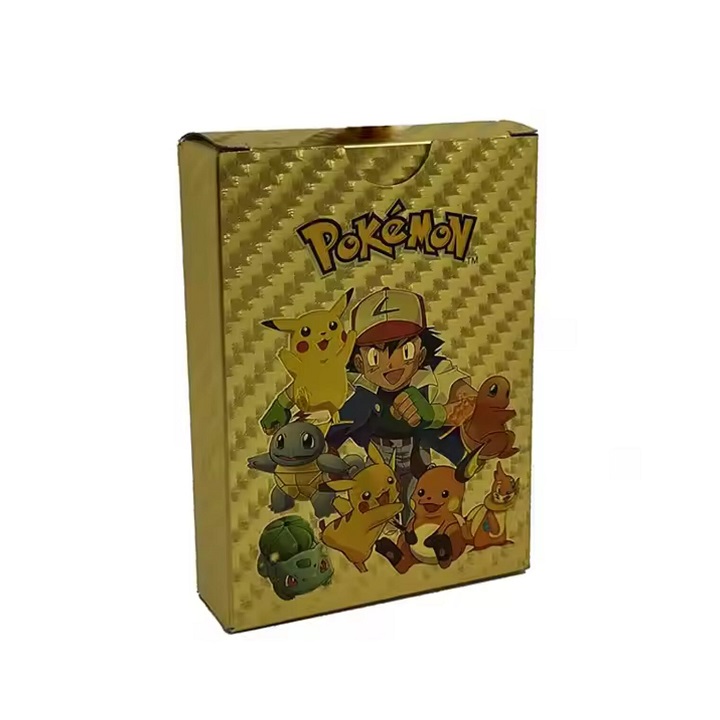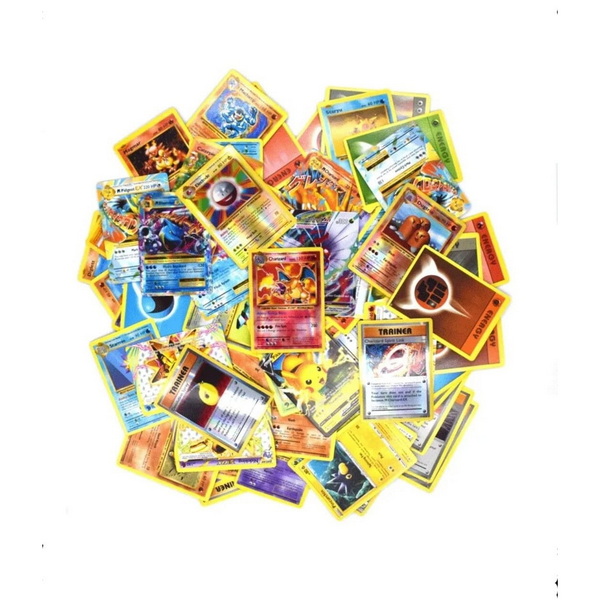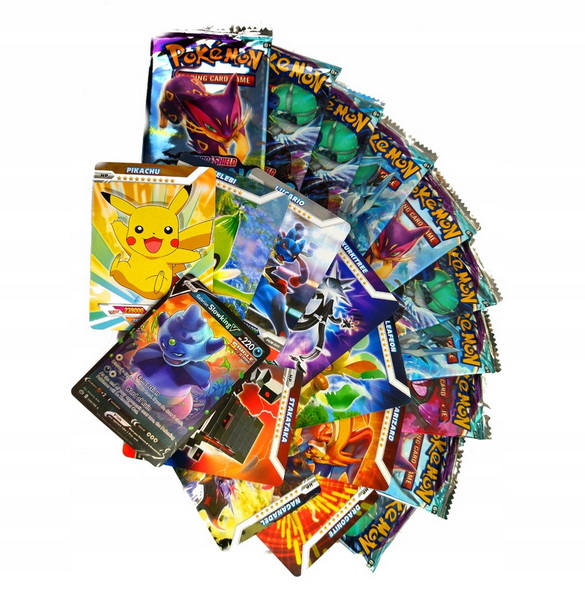Content Menu
● Introduction
● Getting Started
>> The Basics of Pokemon TCG
>> Components of a Pokemon Card
● Setting Up the Game
>> Preparing Your Deck
>> Initial Setup
● Gameplay Mechanics
>> Turn Structure
>> Playing Pokemon
>> Energy Cards
>> Trainer Cards
● Battle Mechanics
>> Attacking
>> Weakness and Resistance
>> Retreating
● Winning the Game
● Advanced Strategies
>> Deck Building
>> Understanding the Meta
>> Practice and Learn
● Conclusion
● Frequently Asked Questions
>> 1. How many cards should be in a Pokemon TCG deck?
>> 2. Can I use any Pokemon card in my deck, regardless of its set or release date?
>> 3. How do I know when to evolve my Pokemon?
>> 4. What happens if I run out of cards in my deck?
>> 5. How can I improve my skills in the Pokemon TCG?
● Citations:
Introduction
The Pokemon Trading Card Game (TCG) has been captivating players of all ages since its inception in 1996. As a beginner, stepping into the world of Pokemon TCG can seem daunting at first, but with the right guidance, you'll be battling like a pro in no time. This comprehensive guide will walk you through the basics of the game, from setting up your first match to advanced strategies that will help you become a formidable trainer.

Getting Started
The Basics of Pokemon TCG
At its core, the Pokemon TCG is a strategic card game where two players battle using decks of 60 cards each. These decks consist of Pokemon cards, Energy cards, and Trainer cards. The goal is to defeat your opponent by either knocking out all their Pokemon or collecting all of your Prize cards[1][2].
Components of a Pokemon Card
Before diving into gameplay, it's essential to understand the components of a Pokemon card:
1. Name and Stage: Located at the top of the card, indicating the Pokemon's name and evolution stage.
2. HP (Hit Points): The amount of damage a Pokemon can take before being knocked out.
3. Type: Represented by a symbol, indicating the Pokemon's elemental type.
4. Attacks: Listed with their required Energy and damage output.
5. Weakness and Resistance: Showing which types the Pokemon is vulnerable to or strong against.
6. Retreat Cost: The amount of Energy needed to switch this Pokemon out of the Active spot[3].
Setting Up the Game
Preparing Your Deck
To start playing, you'll need a deck of exactly 60 cards. As a beginner, you might want to consider purchasing a pre-constructed Theme Deck, which is designed to be playable right out of the box[4].
Initial Setup
1. Shuffle your deck thoroughly.
2. Draw seven cards from the top of your deck.
3. Set aside the top six cards of your deck face-down as Prize cards.
4. Place one Basic Pokemon face-down in your Active spot.
5. You may place up to five additional Basic Pokemon face-down on your Bench[5].
If you don't have any Basic Pokemon in your initial hand, reveal your hand to your opponent, shuffle it back into your deck, and draw seven new cards. Your opponent may draw an extra card for each time you do this[1].
Gameplay Mechanics
Turn Structure
Each turn in the Pokemon TCG consists of three main phases:
1. Draw Phase: Draw one card from your deck.
2. Action Phase: Perform any number of actions in any order, such as playing Basic Pokemon, evolving Pokemon, attaching Energy, or using Trainer cards.
3. Attack Phase: Use your Active Pokemon's attack if you choose to and are able to do so[2][5].
Playing Pokemon
- You can play Basic Pokemon directly from your hand to your Bench.
- To evolve a Pokemon, place the Evolution card on top of the Basic Pokemon or previous Evolution stage.
- You can only evolve a Pokemon once per turn, and not on the first turn it was played or the first turn after it became your Active Pokemon[6].
Energy Cards
Energy cards are crucial for powering up your Pokemon's attacks. Remember these key points:
- You can attach only one Energy card per turn to one of your Pokemon.
- Most Energy cards provide one Energy of a specific type, but some Special Energy cards may provide multiple or different types of Energy[2].
Trainer Cards
Trainer cards come in three varieties: Item, Supporter, and Stadium. They provide various effects that can help you during the game. Keep in mind:
- You can play any number of Item cards per turn.
- You can only play one Supporter card per turn.
- Only one Stadium card can be in play at a time[5].

Battle Mechanics
Attacking
When you attack with your Active Pokemon:
1. Check if you have the required Energy attached.
2. Apply any effects described in the attack text.
3. Calculate and apply damage to the opponent's Active Pokemon.
4. Check if the opponent's Pokemon is knocked out[1][2].
Weakness and Resistance
- If a Pokemon is weak to the attacking Pokemon's type, it takes double damage.
- If a Pokemon is resistant to the attacking Pokemon's type, it takes 30 less damage[3].
Retreating
You can retreat your Active Pokemon by paying its Retreat Cost in Energy. After retreating, move the Active Pokemon to your Bench and replace it with one of your Benched Pokemon[5].
Winning the Game
There are three ways to win a Pokemon TCG match:
1. Collect all of your Prize cards.
2. Knock out all of your opponent's Pokemon in play.
3. If your opponent has no cards left to draw at the beginning of their turn[1][2].
Advanced Strategies
Deck Building
As you become more familiar with the game, you'll want to build your own decks. Consider these tips:
- Aim for a balance of Pokemon, Energy, and Trainer cards.
- Include Pokemon with synergistic abilities and attacks.
- Use Trainer cards that support your strategy.
- Ensure you have enough Basic Pokemon to start the game consistently[4].
Understanding the Meta
The "meta" refers to the most popular and effective strategies and decks in competitive play. Stay informed about current trends to improve your gameplay and deck-building skills[7].
Practice and Learn
The best way to improve is through practice. Play against friends, join local leagues, or use online platforms like Pokemon TCG Online to hone your skills[8].
Conclusion
The Pokemon Trading Card Game offers a rich and engaging experience for players of all levels. As a beginner, focus on understanding the basic rules and mechanics of the game. Start with pre-constructed decks and gradually move towards building your own as you gain experience. Remember that the key to success in Pokemon TCG is not just about having powerful cards, but also about strategy, timing, and understanding your opponent's moves.
With practice and dedication, you'll soon find yourself immersed in the exciting world of Pokemon battles, making new friends, and perhaps even competing in tournaments. So shuffle your deck, draw your cards, and may your Pokemon journey be filled with exciting battles and memorable victories!

Frequently Asked Questions
1. How many cards should be in a Pokemon TCG deck?
A standard Pokemon TCG deck must contain exactly 60 cards. This includes a mix of Pokemon cards, Energy cards, and Trainer cards. It's important to maintain this exact number to ensure fair play and consistency across all matches.
2. Can I use any Pokemon card in my deck, regardless of its set or release date?
For casual play, you can generally use any Pokemon cards you own. However, in official tournaments, there are format restrictions. The most common format is Standard, which only allows cards from the most recent sets (usually the past two years). Always check the current rotation and rules before participating in official events.
3. How do I know when to evolve my Pokemon?
You can evolve your Pokemon starting from your second turn or the turn after you've played that Pokemon. It's often strategic to wait to evolve until you need the evolved form's higher HP or stronger attacks. However, be cautious of your opponent's potential to knock out your Pokemon before it evolves.
4. What happens if I run out of cards in my deck?
If you cannot draw a card at the beginning of your turn because your deck is empty, you lose the game. This is why deck management and card draw strategies are crucial aspects of advanced play.
5. How can I improve my skills in the Pokemon TCG?
To improve your skills:
- Practice regularly against various opponents
- Study successful deck strategies and try to understand why they work
- Attend local league events or tournaments to gain experience
- Watch online tutorials and professional matches to learn advanced tactics
- Experiment with different deck builds to find your preferred playstyle
Citations:
[1] https://www.dicebreaker.com/categories/trading-card-game/how-to/how-to-play-pokemon-tcg
[2] https://economictimes.indiatimes.com/news/international/us/pokmon-trading-card-game-how-to-play-what-are-the-basics-of-pokemon-how-each-card-works-heres-all-you-need-to-know/articleshow/101992216.cms
[3] https://assets.pokemon.com/assets/cms2/pdf/trading-card-game/rulebook/sm7_rulebook_en.pdf
[4] https://www.thegamer.com/pokemon-tcg-pocket-faq-frequently-asked-questions-information-guide/
[5] https://www.pokebeach.com/forums/threads/pokemon-tcg-basic-questions.154796/
[6] https://pokeflip.com/blogs/news/how-to-play-the-pokemon-tcg-in-2021-a-beginners-tutorial
[7] https://www.instructables.com/How-to-Play-the-Pokemon-Trading-Card-Game/
[8] https://gamefaqs.gamespot.com/gbc/250612-pokemon-trading-card-game/faqs
[9] https://gamerant.com/pokemon-tcg-pocket-beginner-tips/
[10] https://www.reddit.com/r/pkmntcg/comments/ae96dx/pokemon_tcg_and_some_beginner_questions/
[11] https://www.youtube.com/watch?v=-l5qbcwpxIs
[12] https://www.thegamer.com/beginners-tips-faq-guide-pokemon-trading-card-game/
[13] https://www.pokemon-zone.com/articles/tcg-pocket-beginners-guide/
[14] https://gamerant.com/pokemon-tcg-beginner-tips/
[15] https://www.pokemon.com/static-assets/content-assets/cms2/pdf/trading-card-game/rulebook/par_rulebook_en.pdf
[16] https://tcg.pokemon.com/assets/img/learn-to-play/getting-started/quick-start-rules/en-us/quick_start_rulebook.pdf
[17] https://www.youtube.com/watch?v=Syx6UJtMQRQ
[18] https://www.thegamer.com/beginners-tips-faq-guide-pokemon-trading-card-game/
[19] https://tcg.pokemon.com/en-us/learn/
[20] https://www.pokecommunity.com/threads/pokemon-cards-help-question.494881/
[21] https://pokemondb.net/pokebase/60662/trading-card-game-question
[22] https://game8.co/games/Pokemon-TCG-Pocket/archives/474410
































